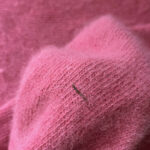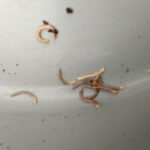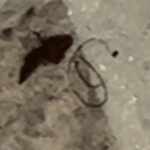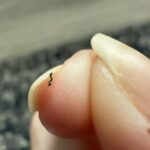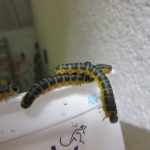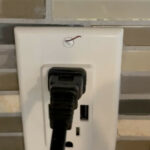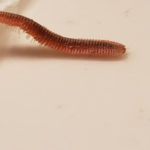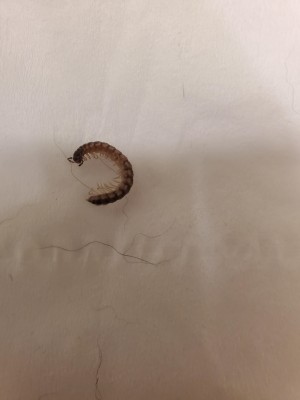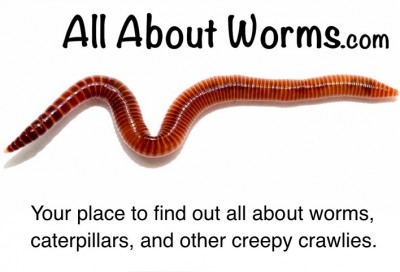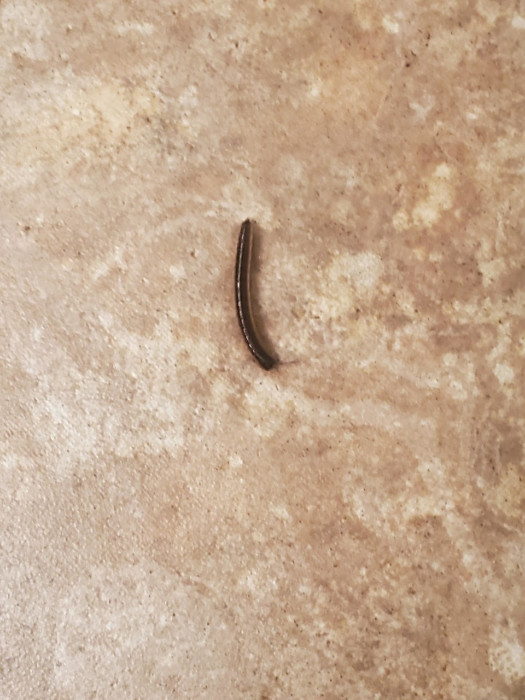
“What is this worm?” asks this reader in her submission regarding the small, black organism pictured below. “How do I get rid of it? They’re everywhere. I’m in Tuscaloosa, Alabama.” Based on the excellent photo she sent, we think that this is a millipede. Its segmentation, size, and antennae point to this conclusion, as well as the apparent lack of legs. What we must note is that millipedes actually possess many legs, and that is what they are known for, but since they grow from the underside of their bodies, they are often not visible. As such, people often mistake millipedes for worms and marvel at how they seemingly glide across a surface.
Millipedes are completely harmless. They eat decomposing organic matter and, like earthworms, ‘recycle’ that organic matter into nutrient-rich fertilizer via digestion and excretion. They are not to be confused with their fellow arthropod (an organism that is divided into segmented and possesses an exoskeleton) the centipede, whose legs grow from the outside of their bodies, and which are predators that feed on small bugs. The most ‘harm’ a millipede can do to a person is excrete a toxin which may cause irritation. For that reason, it may still be smarter to avoid physical contact with them.
Now, millipedes often swarm the outside or inside of people’s homes during the summer because the weather gets too hot and dry, while the millipede prefers an environment that is damp and cool. Our reader did not let us know where they found the millipedes, but they can typically be found in one’s basement or garage, or just outside on a shaded patio or deck. To control a millipede infestation, the best thing one can do is install some preventative measures. For example, removing any piles of organic litter around one’s yard such as rocks, twigs and leaves will give the millipedes less places to take shelter in from the heat on one’s property, which will then detract more millipedes from even coming near one’s home.
Similarly, when it comes to the millipedes that have already come to one’s home, moving them somewhere (via scooping them up onto a dustpan with a brush or something similar) that will provide the cool climate they seek should suffice in making sure they do not return to one’s home. On top of that, keeping one’s home dry and warm is vital to keeping millipedes out of the home.
To conclude, the ‘worms’ our reader found are actually millipedes, which are not worms at all, but arthropods. We hope the information we provided helps our reader tackle this infestation, and we wish her the very best!
All About Worms is always free, always reader-supported. Your tips via CashApp, Venmo, or Paypal are appreciated! Receipts will come from ISIPP Publishing.
You might also find these guys interesting!




